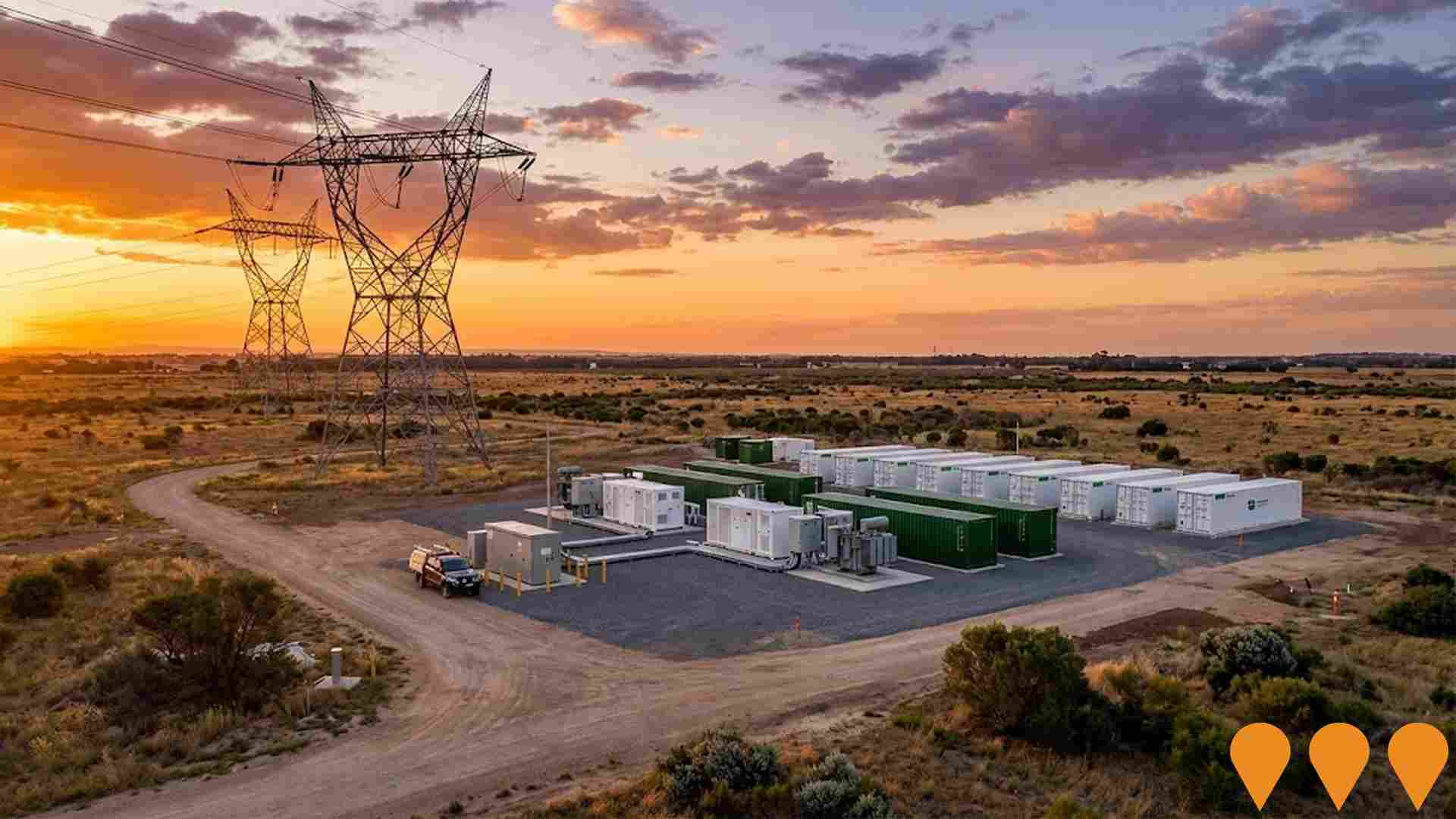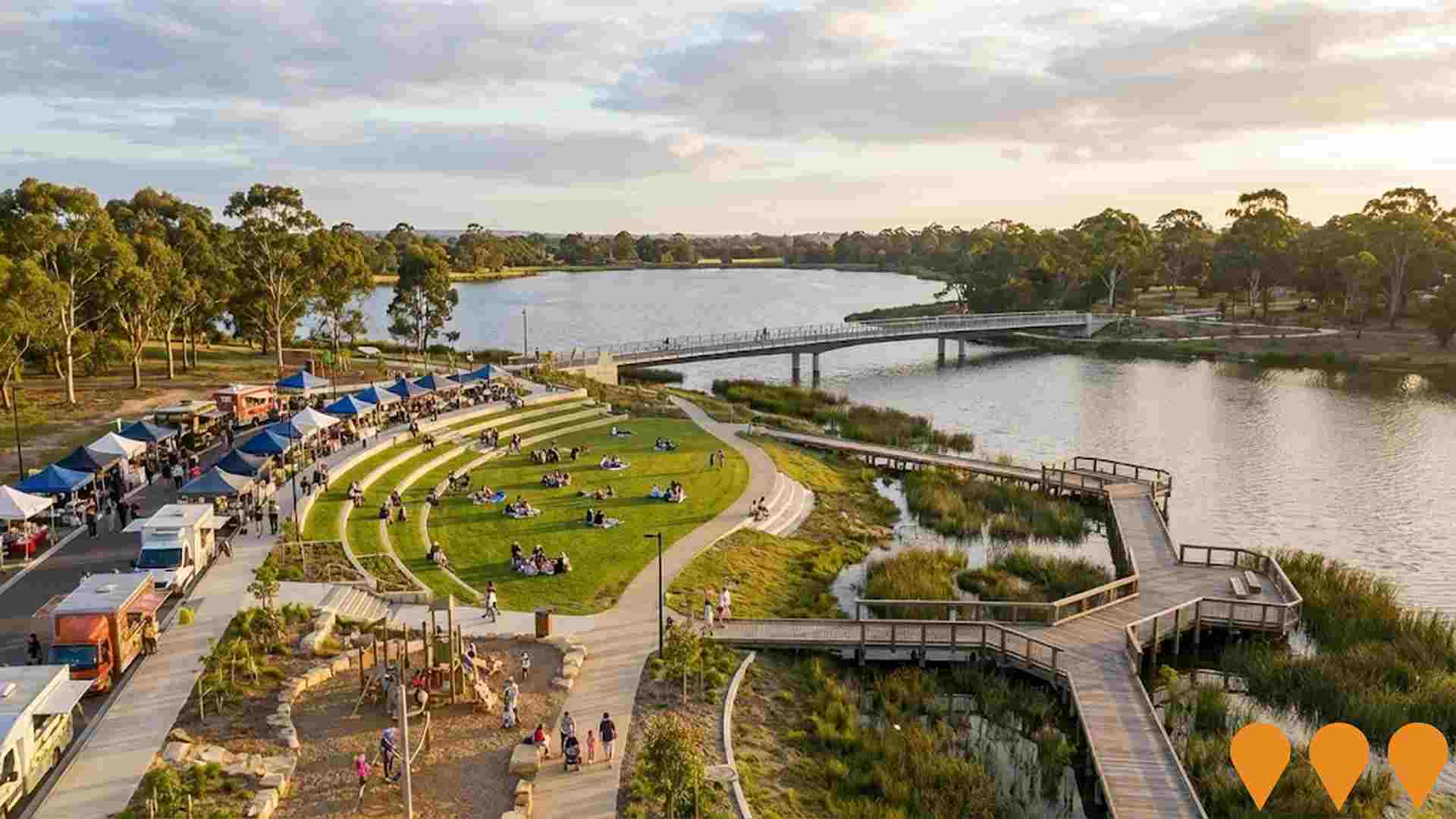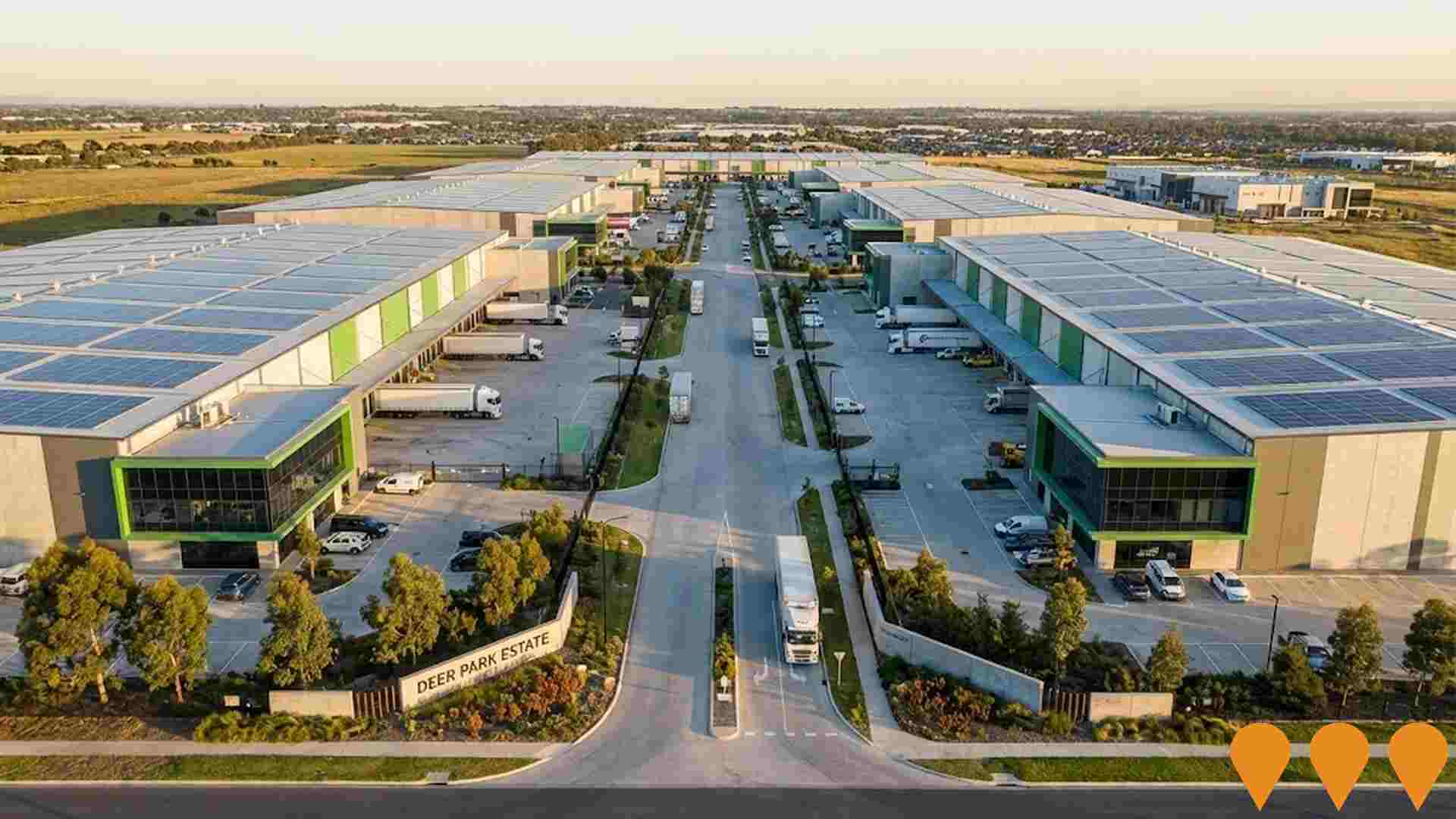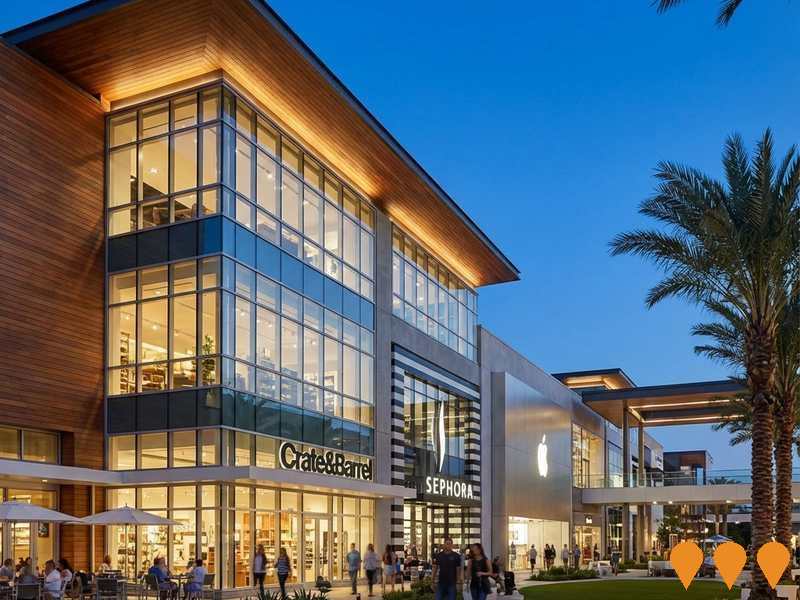Chart Color Schemes
est. as @ -- *
ABS ERP | -- people | --
2021 Census | -- people
Sales Activity
Curious about local property values? Filter the chart to assess the volume and appreciation (including resales) trends and regional comparisons, or scroll to the map below view this information at an individual property level.
Find a Recent Sale
Sales Detail
Population
Burnside lies within the top 10% of areas nationally in terms of population growth performance according to AreaSearch analysis of short and medium-term trends
Burnside's population is around 6,579 as of Aug 2025. This reflects an increase of 779 people since the 2021 Census, which reported a population of 5,800 people. The change is inferred from the estimated resident population of 6,449 from the ABS as of June 2024 and an additional 179 validated new addresses since the Census date. This level of population equates to a density ratio of 2,580 persons per square kilometer. Burnside's growth of 13.4% since the 2021 census exceeded the national average (8.6%). Population growth for the area was primarily driven by interstate migration contributing approximately 48.1% during recent periods.
AreaSearch is adopting ABS/Geoscience Australia projections released in 2024 with a base year of 2022 for each SA2 area. For areas not covered, AreaSearch is utilising VIC State Government's Regional/LGA projections released in 2023 with adjustments made employing a method of weighted aggregation of population growth from LGA to SA2 levels. Growth rates by age group are applied across all areas for years 2032 to 2041. Considering the projected demographic shifts, exceptional growth is predicted over the period with the area expected to increase by 3,602 persons to 2041 based on the latest population numbers, recording a gain of 52.8% in total over the 17 years.
Frequently Asked Questions - Population
Development
AreaSearch assessment of residential development activity positions Burnside among the top 25% of areas assessed nationwide
Burnside has recorded approximately 69 residential properties granted approval annually. Over the past five financial years, from FY21 to FY25, around 349 homes have been approved, with an additional 13 approved so far in FY26. On average, about 2.6 people per year have moved to the area for each new home constructed during this period, indicating solid demand that supports property values.
New homes are being built at an average expected construction cost of $573,000, which is moderately above regional levels, suggesting an emphasis on quality construction. In FY26, there have been $8.0 million in commercial approvals, indicating limited focus on commercial development. Compared to Greater Melbourne, Burnside shows substantially reduced construction activity, with 55.0% below the regional average per person. This constrained new construction typically reinforces demand and pricing for existing properties. However, developer confidence in the area is strong, reflected by the national average level being well above average.
Recent development has been entirely comprised of detached houses, preserving Burnside's suburban nature and attracting space-seeking buyers. With around 117 people per dwelling approval, Burnside shows characteristics of a growth area. Future projections estimate that Burnside will add approximately 3,472 residents by the year 2041. Development is keeping pace with projected growth, though increasing competition among buyers can be expected as the population expands.
Frequently Asked Questions - Development
Infrastructure
Burnside has strong levels of nearby infrastructure activity, ranking in the top 30% nationally
Changes to local infrastructure significantly impact an area's performance. AreaSearch has identified six projects that may affect this region. Notable ones include Amora Estate Cairnlea, Cairnlea Remediation Project, Taylors Creek Residential Estate, and Western Freeway Upgrade from Melton to Caroline Springs. The following list details those most relevant.
Professional plan users can use the search below to filter and access additional projects.
INFRASTRUCTURE SEARCH
 Denotes AI-based impression for illustrative purposes only, not to be taken as definitive under any circumstances. Please follow links and conduct other investigations from the project's source for actual imagery. Developers and project owners wishing us to use original imagery please Contact Us and we will do so.
Denotes AI-based impression for illustrative purposes only, not to be taken as definitive under any circumstances. Please follow links and conduct other investigations from the project's source for actual imagery. Developers and project owners wishing us to use original imagery please Contact Us and we will do so.
Frequently Asked Questions - Infrastructure
Melbourne Grid Battery
A market-facing grid battery connected to existing transmission infrastructure, located at the Deer Park Energy Hub 20km west of Melbourne's CBD. It provides 280MW/560MWh capacity to optimize renewable energy use, supply energy when needed, and support grid reliability.

Lake Caroline Master Plan & Activation Strategy
Comprehensive enhancement of Lake Caroline Reserve including mid-lake crossing, dedicated event lawn, playspace upgrade, shared zone along Lake Street for markets and festivals, new viewing platforms, ecological wetlands restoration, and infrastructure renewal of 20-year-old boardwalks and facilities to create a vibrant regional community destination.

Deer Park Station Redevelopment and Level Crossing Removal
Major infrastructure project involving the removal of Mt Derrimut Road level crossing, construction of a 1.2km elevated rail bridge, and a new elevated Deer Park Station with rooftop garden - Victoria's first station with this feature. Includes 150 new car parks bringing total to 487 spaces, bus interchange, and sustainable features including recycled plastic concrete. Project completed in 2023.

Deer Park Estate
A 66ha industrial estate planned to deliver 330,000-340,000sqm of logistics and highbay warehousing with potential data centre and restricted retail uses. Development Plan approved by Brimbank City Council; estate is now leasing with HB+B Property acting as development manager for UniSuper with GPT. ESG features targeted across the precinct.

Deer Park Terminal Station
Deer Park Terminal Station is a 220/66kV terminal station developed by Lumea at Deer Park, Victoria. It was the first competitive win by a non-incumbent in Victoria, delivering improved energy supply reliability and increased capacity to meet growing demand for renewable energy, supporting Australia's transition to a clean energy future.

Taylors Creek Residential Estate
A masterplanned residential community by ID_Land delivering around 600 new homes, local parks and future neighborhood convenience retail in Kings Park, within Melbourne's western suburbs.

Western Freeway Upgrade - Melton to Caroline Springs
Major freeway upgrade between Melton and Caroline Springs including additional road lanes, new interchanges and overpasses, upgrades to existing interchanges, walking and cycling paths, traffic signal improvements and public transport facilities. Handles 86,000 vehicles daily, expected to rise to 113,000 by 2031.

Ballarat Road Development Site
A momentous development opportunity comprising a sprawling 28,039 sqm landholding across four titles with over 420m of main road frontage to Ballarat Road. Zoned Commercial 2, the site offers flexibility for large-scale Quick Service Retail (QSR), Large Format Retail (LFR), industrial, or commercial developments (STCA). Positioned in a high-exposure location with over 61,000 vehicles passing daily, near major retailers like Costco and Bunnings, and excellent connectivity to transport links.

Employment
Employment conditions in Burnside remain below the national average according to AreaSearch analysis
Burnside has a skilled labour force with diverse industry representation. Its unemployment rate is 4.9%, having grown by 5.3% over the past year as of June 2025.
There are 3,326 residents employed, with an unemployment rate of 5.2%. The workforce participation rate is 59.5%, compared to Greater Melbourne's 64.1%. Leading industries include health care & social assistance, retail trade, and transport, postal & warehousing. Burnside specializes in the latter, with an employment share twice the regional level.
However, professional & technical services have limited presence at 5.4% compared to the regional 10.1%. Employment opportunities locally may be limited as indicated by Census data. Between June 2024 and June 2025, employment levels increased by 5.3%, labour force by 5.8%, leading to a 0.4% rise in unemployment. Greater Melbourne saw employment grow by 3.5%. Jobs and Skills Australia projects national employment growth of 6.6% over five years and 13.7% over ten years, with varying rates across industries. Applying these projections to Burnside's employment mix suggests local growth of approximately 6.2% over five years and 13.1% over ten years.
Frequently Asked Questions - Employment
Income
Income levels sit below national averages according to AreaSearch assessment
Burnside had a median taxpayer income of $45,747 and an average of $53,731 according to postcode level ATO data aggregated by AreaSearch for the financial year 2022. This was lower than national averages, contrasting with Greater Melbourne's median income of $54,892 and average income of $73,761. Based on Wage Price Index growth of 12.16% since the financial year 2022, current estimates would be approximately $51,310 (median) and $60,265 (average) as of September 2025. According to 2021 Census figures, household income ranked at the 57th percentile ($1,871 weekly), while personal income was at the 24th percentile. Income analysis showed that the $1,500 - 2,999 bracket dominated with 34.9% of residents (2,296 people), aligning with regional levels where this cohort also represented 32.8%. High housing costs consumed 16.7% of income, but strong earnings still placed disposable income at the 57th percentile and the area's SEIFA income ranking placed it in the 5th decile.
Frequently Asked Questions - Income
Housing
Burnside is characterized by a predominantly suburban housing profile, with above-average rates of outright home ownership
In Burnside, as per the latest Census, 85.3% of dwellings were houses, with 14.7% being other types such as semi-detached homes, apartments, and 'other' dwellings. This compares to Melbourne metro's 90.9% houses and 9.1% other dwellings. Home ownership in Burnside stood at 31.1%, with mortgaged dwellings at 58.4% and rented ones at 10.5%. The median monthly mortgage repayment was $2,000, higher than Melbourne metro's average of $1,800. The median weekly rent in Burnside was $400, compared to Melbourne metro's $351. Nationally, Burnside's mortgage repayments exceeded the Australian average of $1,863, while rents were higher than the national figure of $375.
Frequently Asked Questions - Housing
Household Composition
Burnside features high concentrations of family households, with a higher-than-average median household size
Family households constitute 80.9% of all households, including couples with children (51.5%), couples without children (18.6%), and single parent families (9.9%). Non-family households account for the remaining 19.1%, composed of lone person households at 18.0% and group households at 1.1%. The median household size is 3.1 people, larger than the Greater Melbourne average of 3.0.
Frequently Asked Questions - Households
Local Schools & Education
Burnside performs slightly above the national average for education, showing competitive qualification levels and steady academic outcomes
The area's university qualification rate is 25.0%, significantly lower than Greater Melbourne's average of 37.0%. Bachelor degrees are most common at 18.5%, followed by postgraduate qualifications (4.8%) and graduate diplomas (1.7%). Vocational credentials are prevalent, with 30.4% of residents aged 15+ holding them, including advanced diplomas (11.1%) and certificates (19.3%). Educational participation is high, with 33.5% of residents currently enrolled in formal education: 11.7% in primary, 9.7% in secondary, and 5.3% in tertiary education.
Burnside Primary School serves the area, enrolling 405 students, and offers typical Australian school conditions (ICSEA: 1034) with balanced educational opportunities. It focuses exclusively on primary education, with secondary options available nearby. Local school capacity is limited at 6.2 places per 100 residents compared to the regional average of 16.3, leading many families to travel for schooling.
Frequently Asked Questions - Education
Schools Detail
Nearby Services & Amenities
Transport
Transport servicing is good compared to other areas nationally based on assessment of service frequency, route connectivity and accessibility
Burnside has 20 active public transport stops, all of which are bus stops. These stops are served by three different routes that together facilitate 1,499 weekly passenger trips. The accessibility of public transport in Burnside is rated as good, with residents on average located 210 meters from the nearest stop.
On average, there are 214 trips per day across all routes, which translates to approximately 74 weekly trips per individual stop.
Frequently Asked Questions - Transport
Transport Stops Detail
Health
The level of general health in Burnside is notably higher than the national average with prevalence of common health conditions low among the general population though higher than the nation's average across older, at risk cohorts
Burnside demonstrates a lower prevalence of common health conditions among its general population compared to national averages, with arthritis and asthma being the most common at 7.2 and 6.9%, respectively. However, only approximately 47% of Burnside's total population (~3092 people) have private health cover, which is lower than Greater Melbourne's 50.8%. Nationally, the average is 55.3%.
A higher proportion of residents, 73.3%, report being completely clear of medical ailments compared to Greater Melbourne at 73.7%. Burnside has a larger senior population aged 65 and over at 16.3% (1071 people), compared to Greater Melbourne's 10.1%. Health outcomes among seniors in Burnside require more attention than the broader population, presenting some challenges.
Frequently Asked Questions - Health
Cultural Diversity
Burnside is among the most culturally diverse areas in the country based on AreaSearch assessment of a range of language and cultural background related metrics
Burnside's population is culturally diverse, with 49.3% born overseas and 56.4% speaking a language other than English at home. Christianity is the predominant religion, accounting for 60.5%. Buddhism is overrepresented, comprising 5.9%, compared to Greater Melbourne's 2.8%.
The top three ancestry groups are Other (23.0%), Australian (12.1%), and English (10.3%). Filipino (8.3%), Maltese (5.9%), and Serbian (1.6%) ethnicities are notably overrepresented in Burnside compared to regional averages.
Frequently Asked Questions - Diversity
Age
Burnside's population is slightly younger than the national pattern
Burnside has a median age of 37, which matches Greater Melbourne and is comparable to Australia's median age of 38. The 15-24 age group is strongly represented at 15.7%, higher than Greater Melbourne's figure. However, the 25-34 cohort is less prevalent in Burnside at 11.2%. Since 2021, there has been an increase in the 15-24 age group from 12.9% to 15.7%, while the 25-34 cohort has decreased from 12.4% to 11.2%. The 55-64 age group has also dropped, from 11.2% in 2021 to 10.1%. By 2041, demographic projections indicate significant shifts in Burnside's age structure. Notably, the 15-24 group is projected to grow by 62%, adding 637 people and reaching a total of 1,670 from its current figure of 1,032.

